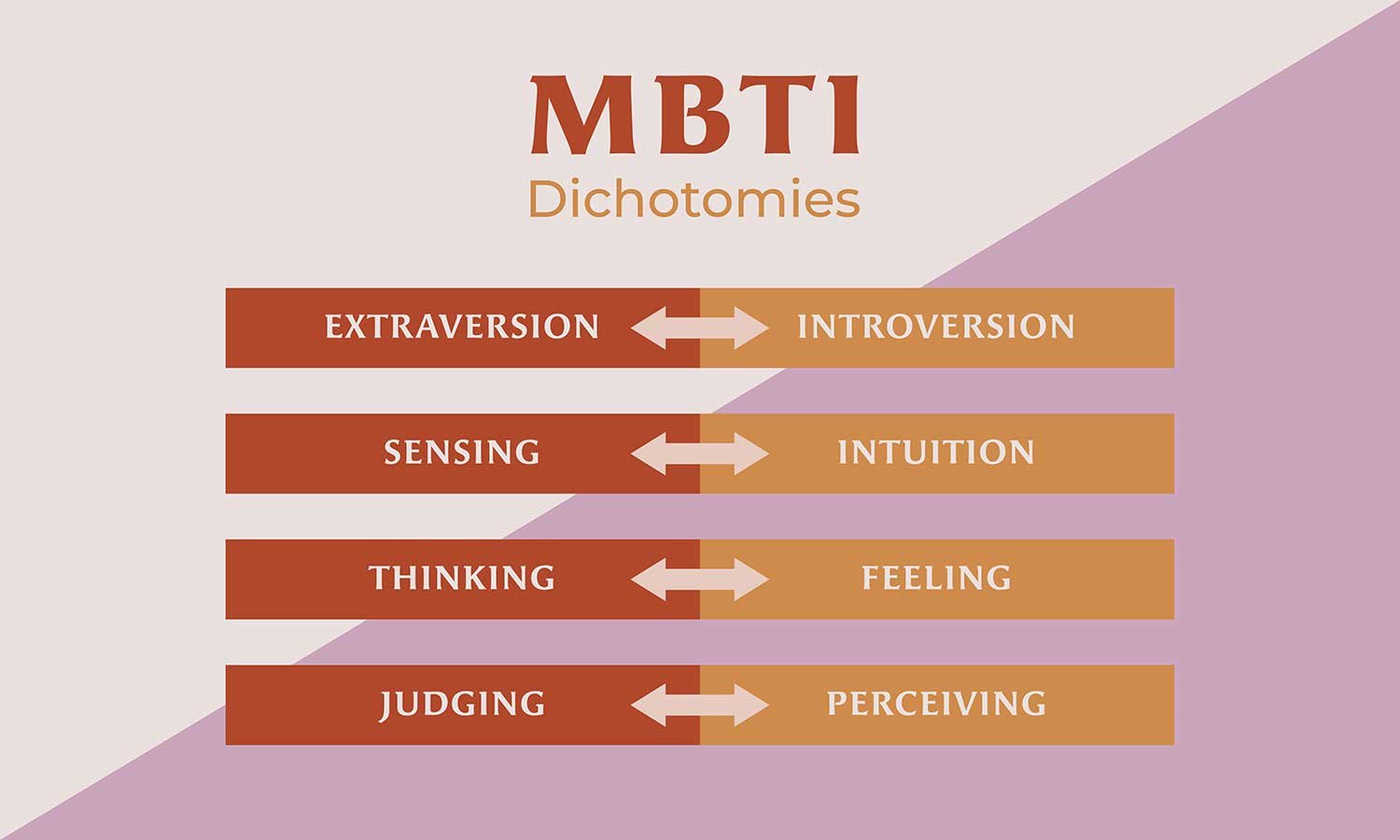On This Page:
ESFP, as outlined in the Myers-Briggs Type Indicator (MBTI), stands for Extraversion, Sensing, Feeling, and Perceiving. ESFPs are sociable, pragmatic, and spontaneous, often characterized by their zest for life, empathetic nature, and preference for hands-on, in-the-moment experiences.
ESFP Meaning
ESFPs find motivation through social engagement (Extraversion), favor practical, sensory experiences over abstract concepts (Sensing), make decisions centered around personal values and emotions (Feeling), and appreciate adaptability and living in the moment (Perceiving).
ESFPs are sometimes referred to as “the Performer” or “the Entertainer.” INTJ is the opposite personality type of ESFP
People with this personality type tend to be outgoing, friendly, and impulsive, acquiring the most enjoyment from being in the presence of others.
They love to be the center of attention and enjoy working with others in new environments. They can be described as easy going, fun, spontaneous and optimistic. They tend to stay focused on the present moment and enjoy learning through hands-on experiences.
ESFP is the third most common type among women, and the seventh most common among men. ESFPs make up:
- 3% of the general population
- 7% of men
- 10% of women
Famous ESFPs include Marilyn Monroe, Dolly Parton, Magic Johnson, Elvis Presley, Serena Williams, Pablo Picasso, and Will Smith.
| Strengths | Weaknesses |
|---|---|
| Optimistic | Easily bored |
| Sociable | Poor planners |
| Practical | Impulsive |
| Gregarious | Avoid Conflict |
ESFP Characteristics
ESFPs are energetic and vivacious individuals who love being the center of attention
- They enjoy entertaining others and engaging with those around them, often described by friends and family as the life of the party.
- Their energy can be contagious, and their lively personalities can lighten up any room they enter. ESFPs are always looking for a new adventure or experience, refusing to throw away any chances for fun, action, or excitement.
- They have playful, enthusiastic personalities with a lively sense of humor and a positive attitude.
- Because ESFPs enjoy living in the here and now, they tend to learn as they go, sometimes failing to think about how their current actions can lead to long-term consequences.
ESFPs are warm and fun-loving, constantly looking for ways to pass on their optimism and enthusiasm to their companions
- They are motivated by sympathetic and compassionate instincts and have a sincere interest in the happiness of others.
- ESFPs genuinely want those around them to feel the same excitement and joy that they do.
ESFPs are highly perceptive, observant individuals
- They are keenly aware of their surrounding environment and are naturals at noticing tangible things and changes.
- They are attuned to the emotions and needs of others and are ready and willing to jump in to provide emotional support or practical advice whenever they are needed.
- ESFPs gain satisfaction from spending time with the people they care about.
ESFPs are unique and original, especially when it comes to fashion
- They love to experiment with new styles and are often dressed in sensuous fabrics or bright, sparkling colors.
- They tend to be trendsetters as they love to look for ways to stick out in the crowd and excite the people around them.
- Additionally, they are creative and artistic with their words and actions, treating each day as a performance.
Cognitive Functions of an ESFP
The MBTI suggests that the four different cognitive functions (thinking, feeling, intuition, and sensing) form a hierarchy where each function is either directed outwardly (extroverted) or inwardly (introverted). The order of these functions determines one’s personality.

The dominant function is the primary aspect of personality, while the auxiliary and tertiary functions play supportive roles.
Dominant: Extraverted Sensing
- ESFPs like to live in the moment, enjoying what life has to offer. They focus on the here and now rather than thinking about the distant future.
- They are highly tuned into their senses, observing the sights, sounds, smells, and textures around them.
- ESFPs don’t spend a lot of time planning or organizing but rather make spontaneous decisions based on their gut instincts.
Auxiliary: Introverted Feeling
- ESFPs tend to prioritize their own emotions and feelings rather than logic and facts when making choices.
- They are grounded in reality and typically make decisions based on their internal system of values.
- While they are attuned to their own emotions, they are also highly observant of others and their needs, excelling at putting themselves in another person’s shoes.
Tertiary: Extraverted Thinking
- This function of the ESFP personality type tends to be a weaker aspect of their personality.
- It is focused on enforcing order on the outside world in a productive, logical manner.
- ESFPs are highly observant individuals; however, they may not always feel secure sharing their judgments or opinions with others.
Inferior: Introverted Intuition
- This function is the least prominent aspect of the ESFP personality, but it can help ESFPs notice patterns and make connections in things they have observed in their surrounding environment.
- ESFPs do not tend to utilize logic or fact when discerning abstract concepts, but when this sense materializes, ESFPs will have flashes of insight or epiphanies about themselves and the world around them.
ESFP Hobbies, Interests, and Careers
ESFPs thrive in careers that involve variety, spontaneity, and socialization. They enjoy hands-on work where they are free to be laid-back and instinctive.
They tend to struggle with long-term projects, so they prefer work with immediate and tangible results.
Many ESFPs have a unique artistic streak and value aesthetics. They tend to choose careers that enable them to engage their senses whether through food, textiles, art, or music. They make successful artists, actors, musicians, or designers.
Additionally, ESFPs are realistic, observant individuals who are highly tuned into the needs of others. They enjoy jobs that allow them to be of service to other people and solve practical, people-centered problems.
For example, many ESFPs become therapists, social workers, teachers, consultants, or counselors. ESFPs have a knack for making people happy and can succeed as event planners, tour guides, and sales representatives as these careers involve mingling with others in an exciting, novel way.
In their free time, ESFPs enjoy socializing, participating in team sports, working on home improvement projects, cooking, entertaining, and dancing.
ESFPs love big parties and social gatherings and are always eager to join any group or participate in any activity that sounds like fun.
ESFP Work Environments
ESFPs need a work environment that is care-free and relaxed with a touch of chaos or excitement. They love to socialize with others, especially in their workplace.
ESFPs enjoy working with a team as they see group work as a way to interact and engage with other people.
They appreciate a fun atmosphere where they can become friends with their colleagues, and they enjoy organizing events and activities with their team both inside and outside the workplace.
ESFPs will not succeed in a workplace where they are micromanaged. The more freedom ESFPs are given, the more successful they will be.
Careers that involve a great deal of structure, strict rules or procedures, and solitary work can be difficult for ESFPs as they become easily bored and stressed.
They loathe repetition and strictly defined tasks and will avoid nine to five administrative work at all costs.
ESFP Personal Relationships
ESFPs are highly extraverted individuals who love interacting and spending time with other people. They have excellent interpersonal skills and often draw people in with their positive approach and contagious energy.
They are thoughtful, kind, sociable people and tend to be well-liked by just about everyone. Making new friends isn’t a problem for ESFPs.
They love meeting new people and participating in novel adventures with their friends. They have a unique ability to observe other people’s needs and respond to other people’s emotions, making them good leaders and empathetic companions.
In romantic relationships, ESFPs are warm, sympathetic, and affectionate. They are motivated to please and care for their partners, and enjoy creating a fun, harmonious relationship.
They genuinely take pleasure in each moment they spend with the ones they love and are always looking for a new adventure or activity to experience. Relationships with ESFPs tend to be memorable.
As highly emotional and sensitive individuals, ESFPs respond poorly to criticism. They also tend to avoid conflict as they prefer to move on with their lives rather than dwell on disagreements.
Tips for Interacting With ESFPs
Friendships
As a friend of an ESFP, you need to always be ready for novel experiences whether exploring new places or meeting new people.
ESFPs like to keep life interesting, but they do value a reliable co-conspirator who will have fun alongside them.
Relationships
ESFPs strongly dislike conflict and tend to take any criticism quite personally.
As the partner of an ESFP, it is important to be honest and straightforward while also avoiding being overly harsh or confrontational.
ESFPs want a partner who will support them in their pursuit of excitement and adventure while also appreciating their generosity and affection.
Parenting
As parents, ESFPs are relaxed and laid-back and enjoy having an active, bustling household.
They prefer to engage in fun activities such as sports, hobbies, or outdoor adventures rather than imposing strict rules or tightly scheduled activities.
They do not take life too seriously, taking things day by day and always looking for ways to provide excitement and fun for their children.
Take the MBTI (Paper Version)
References
King, S. P., & Mason, B. A. (2020). Myers‐Briggs Type Indicator. The Wiley Encyclopedia of Personality and Individual Differences: Measurement and Assessment, 315-319.
Myers, I. B. (1962). The Myers-Briggs Type Indicator: Manual (1962).
Myers, K. D., & Kirby, L. D. (2015). Introduction to type: A guide to understanding your results on the MBTI assessment. Sunnyvale, CA: CPP.
Myers-Briggs Type Indicator. (2019, May 28). New World Encyclopedia, . Retrieved from https://www.newworldencyclopedia.org/p/index.php?title=Myers-Briggs_Type_Indicator&oldid=1020015.
Myers, Isabel B.; Myers, Peter B. (1995) [1980]. Gifts Differing: Understanding Personality Type. Mountain View, CA: Davies-Black Publishing. ISBN 978-0-89106-074-1.
Pittenger, D. J. (2005). Cautionary Comments Regarding the Myers-Briggs Type Indicator. Consulting Psychology Journal: Practice and Research, 57(3), 210-221.
The purpose of the Myers-Briggs Type Indicator®. The Myers & Briggs Foundation: MBTI Basics. (n.d.). Retrieved from https://www.myersbriggs.org/my-mbti-personality-type/mbti-basics/

